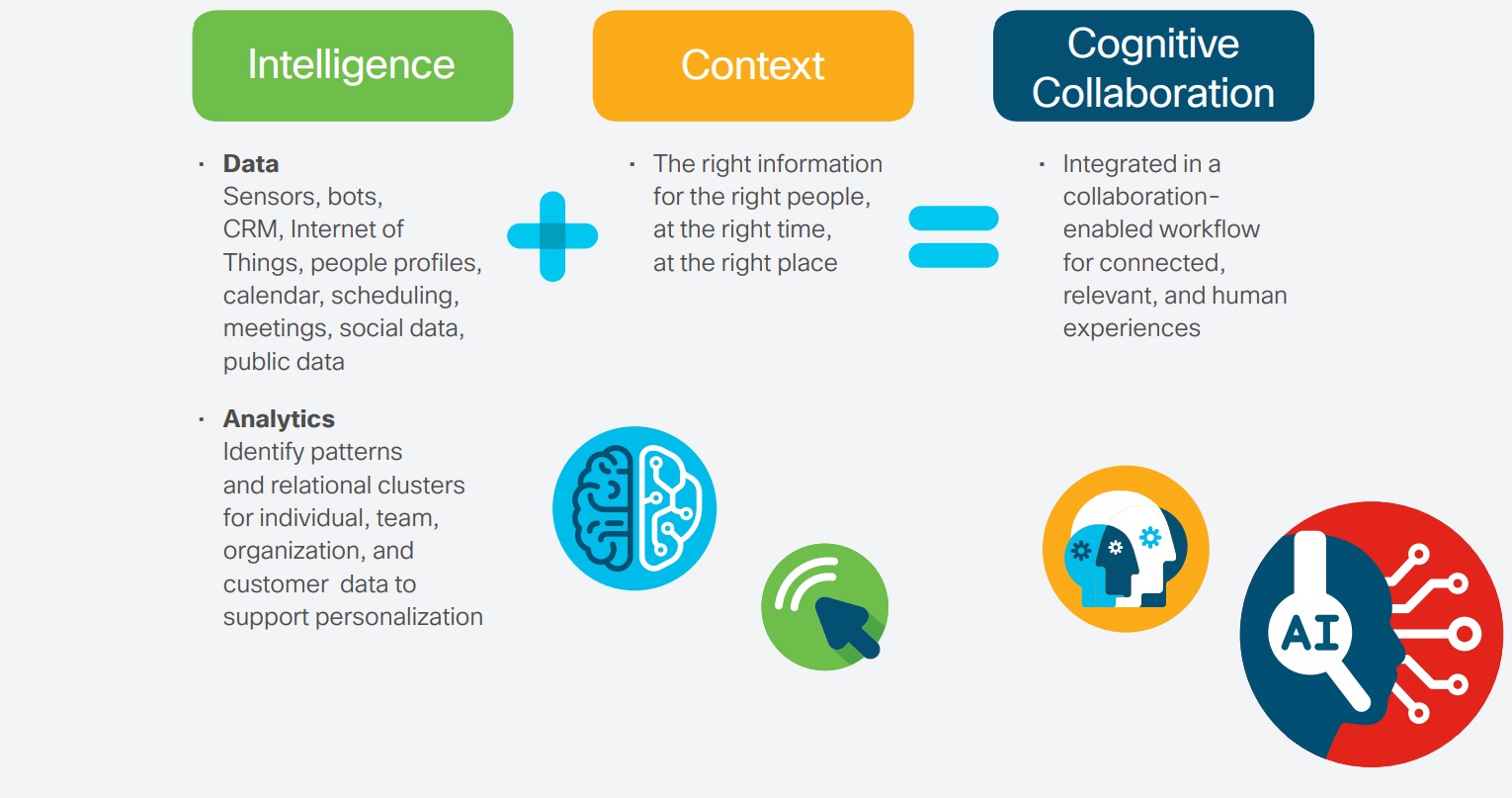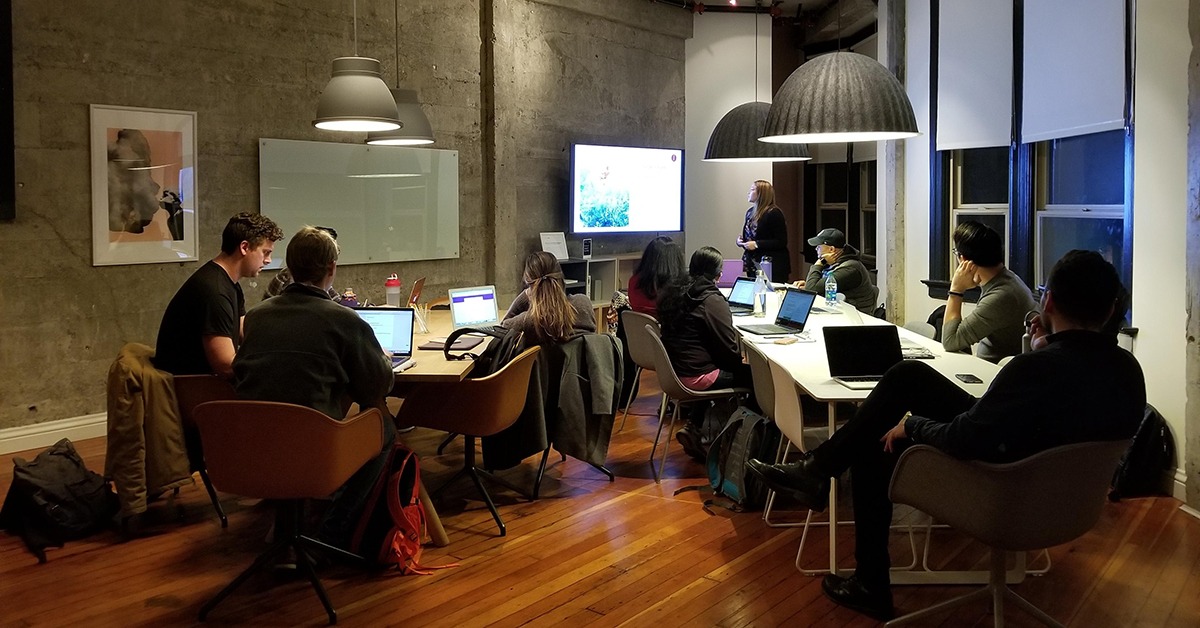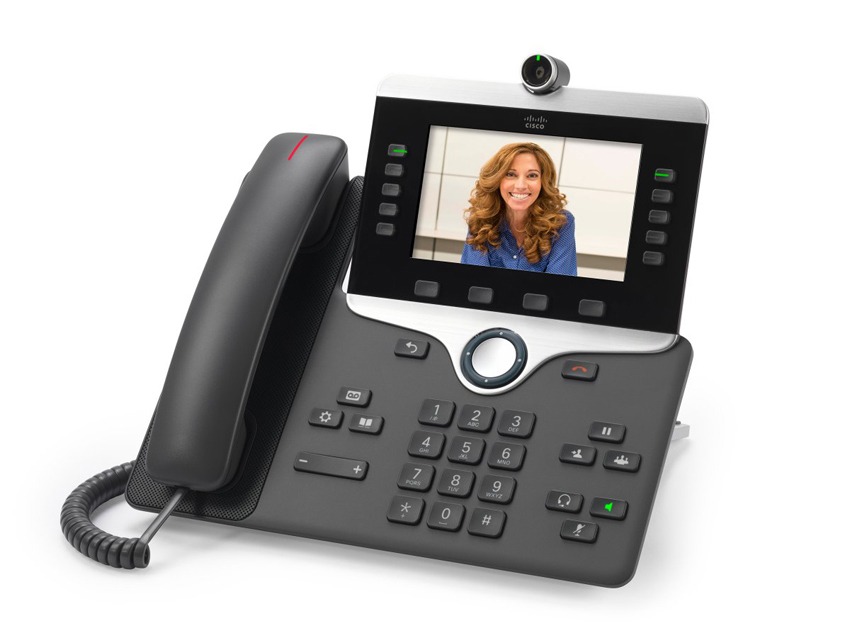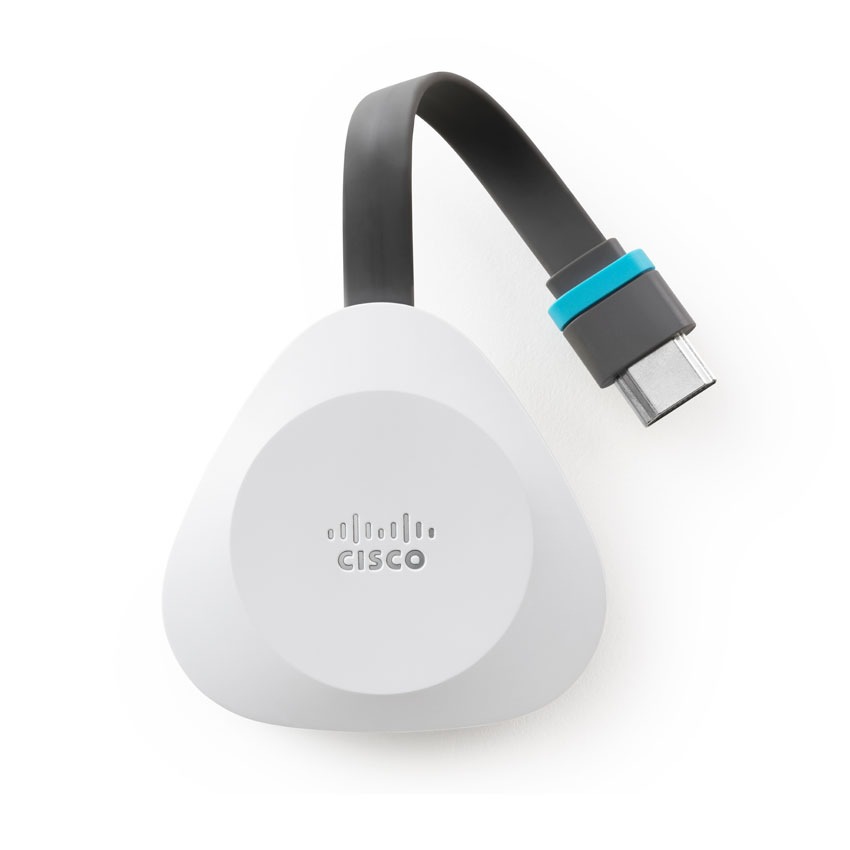
There’s always too much work to do.
Technology gets better, and work gets automated, but it’s never quite right.
There’s still always too much to do.
But, thanks to Cognitive Collaboration, too much work is about to become less stressful.
What is Cognitive Collaboration?
Cognitive Collaboration is a phrase coined by Cisco, which puts the human element back into AI.

Without context, intelligence is useless. Having the right people in the know is vital. While it’s ok to automate, analyse and work with AI, unless everyone is on board, then the work is pointless.
Cognitive Collaboration allows us to put the “Human” element back into AI.
It is the process of using intelligent devices to make it easier to work together, share information and ease workflows. By using technology such as smart boards, video calling and better networking, businesses can ease any friction that stops collaboration between workers.
The process involves capabilities such as accessing detailed profile information during meetings, intelligent virtual assistants, facial recognition, conversational interfaces, dynamic document sharing and analytics-based routing.
In short, Cognitive Collaboration:
- Fosters human relationships
- Enhances customer interactions
- Builds high-performance teams across boundaries to make smarter and faster decisions
Why Is Cognitive Collaboration Important for your Business?
Cognitive collaboration is about harbouring the talents of the people in your business. It’s about making them work smarter, rather than harder.
Working as a team is vital to any business. Creativity, collaboration and solutions should be able to fit together without any issue.
Cubicles and organisational silos are out.
Flexibility and teamwork are the best way to be productive.

Workplace Pain Points
Employees still face the same issues as they have always faced. Technology has always added to the stress, rather than taking it away.
Some of the most common issues are:
People And Relationship Insights
Knowing who you are talking to can often be a struggle. Sometimes, meetings can be sprung on you. Having a quick insight into who you are talking to can be a huge win. Perhaps they like the same football team as you. Or maybe they went to university near to where you grew up. Having this information can help you win over the customer or manager, perhaps helping you sign a huge contract or achieve a promotion.
Meetings
Ever sat in a meeting while the host struggles to find the right login details? Or not been able to find the document they have just referenced? Meetings can often feel like a waste of time if not organised correctly. Having a system and network that flows seamlessly can help make meetings a lot more productive.
Processes
It’s essential to have workflows that, well, work. Being able to keep in touch with people should be easy. It should also be easy to work together on the same documents with ease. Instead, poorly organised and optimised networks lead to the exact opposite. The reality is that people miss vital documents and conversations that may help their work on the project. This starves people of context and leads to overload and file sprawl.
Customer Experience
There’s one thing worse than an angry customer. An angry customer who can’t get an answer quickly. “I’ll get back to you” isn’t always an option. Being able to speed through the process to get the solution you need will be imperative in saving the relationship with that customer. Contextual information will be a necessity.
We need to work better.
Smarter, not harder.
Employees have enough frustrations without adding disorganised systems into the mix. Professionals need a new breed of technology to help straighten things out.
Why Does Cognitive Collaboration Make Work And Business Better?
Flexible working and open-plan offices are the new normal.
It’s not unusual to be dealing with clients and colleagues that are based all over the world. This can mean missing those critical but often impromptu work discussion, which means context and intelligence need to keep up to date.
But, it isn’t as simple as keeping employees in the office.
Before the recession hit, businesses were all about real estate. Having the biggest, fanciest building was a sign of success.
But with the current economic climate, and with remote working becoming much more accessible, real estate suddenly isn’t as important. Most companies are trying to reduce real estate without cutting their productivity and revenue.
But, most cubicles and desks go unused for at least 12-hours a day. So, hot-desking, flexible hours and remote working are far more viable. Employees come to work when it suits them. For early bird, this might mean getting to the office at 7am and leaving at 3pm. For later raisers, it might mean coming in at 12pm and going at 8pm. Some may want to use the night shift. Suddenly, a desk that was only used for 8 hours a day has a much longer lifespan.
Cognitive Collaboration can help improve workflows and increase productivity, no matter where people are in the world. It opens up the workplace and allows employees to work where they feel most inspired.
How Does Cognitive Collaboration Work?
Cognitive Collaboration helps tasks get done in context by tapping into data sources across internal and external networks. This information gets pulled into one seamless and intuitive place.
With a mix of AI and Machine Learning working together with human brains and empathy, the process can be simplified, improved and seamless.
This helps businesses ensure that:
- Activities between people and technology are frictionless, human, and insightful.
- Workstream experiences make the tasks of collaborating easy and intuitive.
- Customer experiences are personalised, proactive, and responsive.

Building Your Cognitive Collaboration Network
Building a network that works for your employee’s work begins with research. Learning how company employees work is the best way to get everything worked out.
The worst thing is to throw staff into a brand-new system and force them to use it.
By working with employees and helping restructure the way they work, it will work better for them.
However, no matter how your team works, there are a few things which will always form the core of a cognitive collaboration workflow.
Fast Networks
The backbone of a productive working is a smooth-running network. Having the right basis will mean that workers can work quickly and smoothly, without any hiccups.
Having robust switches, access points and cables will help support your internal network. It’s all well and good having the latest collaboration equipment, but if your network is slow or your WiFi drops out, then you will have a hard time implementing the system. You might find you also need to build your network from scratch. But improving and optimising a website is a great way to improve employee happiness and productivity, which ultimately increases your company’s profits.
Cisco has a vast range of switches and access points which can help your network keep stable.

For large corporations, the Catalyst 9200 and Catalyst 9300 range will provide a full software-defined switching and wireless portfolio for your network. These managed switches come with incredible analytics and insights to help you manage your network.
For medium-sized enterprises with limited IT staff, Cisco Meraki will provide excellent network analytics for a mid-range budget. With an intuitive cloud managed interface, Meraki allows you to see your network on one plane of glass.
For smaller networks, the Cisco SMB switches and access point ranges are perfect. Managed switches in the series come installed with Cisco SNA, free software to help you manage the network.
Intuitive Meeting Rooms And Break Out Spaces
As we mentioned earlier, there is nothing worse than a disorganised meeting. Being able to access the files and data you need is the key to productive meetings.
Cisco’s Webex Share provides high-quality, cable-free content for local meetings on any HDMI display. It plugs into any screen to turn it into an intuitive Webex board, complete with Cisco’s Webex team or Webex meeting software.
Users can use the device to broadcast their screen without needing to swap wires or dongles around different devices.
The Webex Share device emits ultrasound waves that are picked up by the laptop or mobile devices that enter the room. The Laptops simply use the Webex Team or Meeting apps. This helps eliminate the need for slow sharing of documents to the one plugged in or swapping wires. Simply use the app to take over the screen.
You can share specific app only, while you can keep working in the background or share your whole screen.
Webex Share also allows you to connect remote team members too. They can share content to the screen wherever they are in the world.
IP Video Phones

Phones have taken a step up in recent years. The development of IP phones has brought about Video calling.
Cisco 8845 IP Phones have high-fidelity and reliable voice communications. Also, the phones feature a 720p HD video screen which allows video calls. This allows remote workers and external branches to speak face-to-face with one another.
Video calls bring staff together. It allows staff to put faces to names, read expressions and build better relationships.
If you wanted to take video calls to the next level, the DX series is a desktop line with 1080p HD touch screen. It has a high-quality speakerphone so conversations are crystal clear.
Cognitive Collaboration is changing the way we work. As companies seek to reduce overheads, and workload increases, context and intelligence is going to be vital to companies. Start your collaboration journey today. Find your collaboration solution with Cisco, or call our experts on 01245 459 492.


